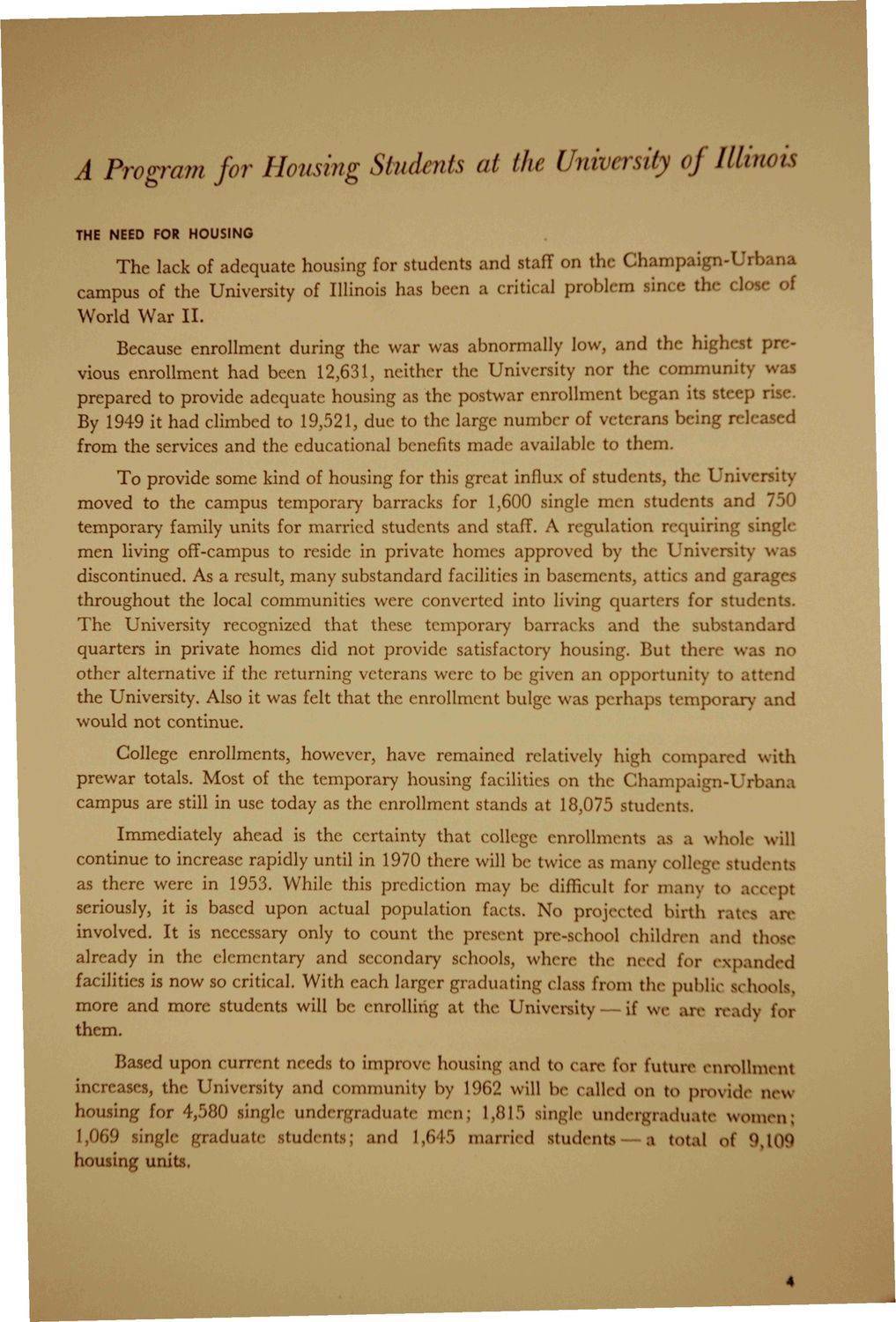| |
| |
Caption: Booklet - Future of Student Housing (1956)
This is a reduced-resolution page image for fast online browsing.

EXTRACTED TEXT FROM PAGE:
A Program for Housing Students at the University OJ Ulna is THE NEED FOR HOUSING The lack of adequate housing for students and staff OH the Champaign-Uri campus of the University of Illinois has h e n a critical problem sin the close of World War I I . Because enrollment during the war was abnormally low, and the highest previous enrollment had been 12,631, neither the University nor the community was prepared to provide adequate housing as the postwar enrollment began its steep risi By 1949 it had climbed to 19,521, due to the large number of veterans 1 ng released from the services and the educational benefits mad< dlable to them. T o provide some kind of housing for this great influx of students, the University moved to the campus temporary barracks for 1,600 single men students and \ 0 temporary family units for married students and staff. A regulation I juiring sine men living off-campus to reside in private homes approved by the University \ discontinued. As a result, many substandard facilities in basements, attics and gar throughout the local communities were converted into living quarters foi tuden T h e University recognized that these temporary barracks and the substandard quarters in private homes did not provide satisfactory housing. But there was no other alternative if the returning veterans were to be given an opportunity to attend the University. Also it was felt that the enrollment bulge was perhaps temporan md would not continue. College enrollments, however, have remained relatively high compar 1 with prewar totals. Most of the temporary housing facilities on the Champai l-Urban campus are still in use today as the enrollment stands at 18,075 students. Immediately ahead is the certainty that college enrollments . whole will continue to increase rapidly until in 1970 there will be twice as many colle tudem as there were in 1953. While this prediction may be difficult for many to a< ept seriously, it is based upon actual population facts. No projected birth rates are involved. It is necessary only to count the present pre-school children and those already in the elementary and secondary schools, where the need for expanded facilities is now so critical. With each lai T graduating class from the public schools, more and more students will be enrolling at the University — if we .ire ready for them. Based upon current needs to improve housing and to >.ur for future enrollment incn ., the University and community by 1962 will be called on to provide new housing for 4,580 single undergraduate men; 1,815 single undergraduate women; 1,069 single "udii.itr students; and 1,645 married students — A total of 9,10! housing units. 4
| |